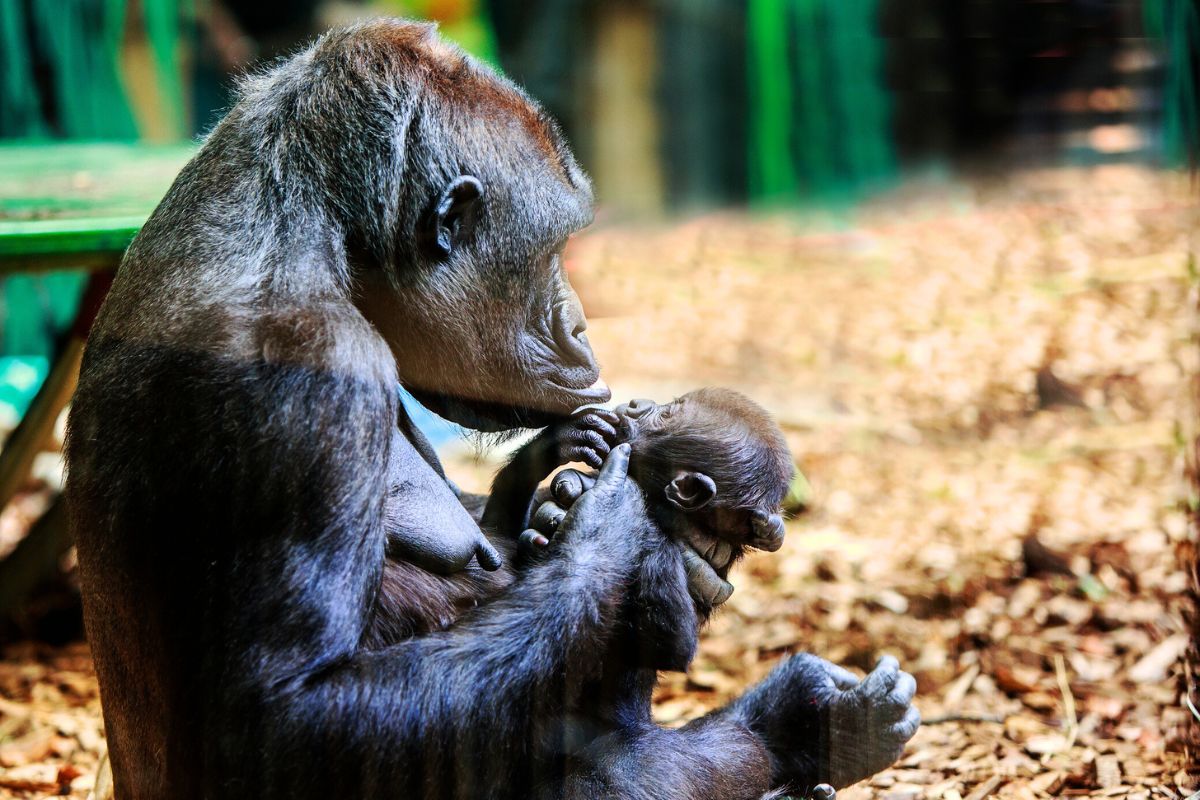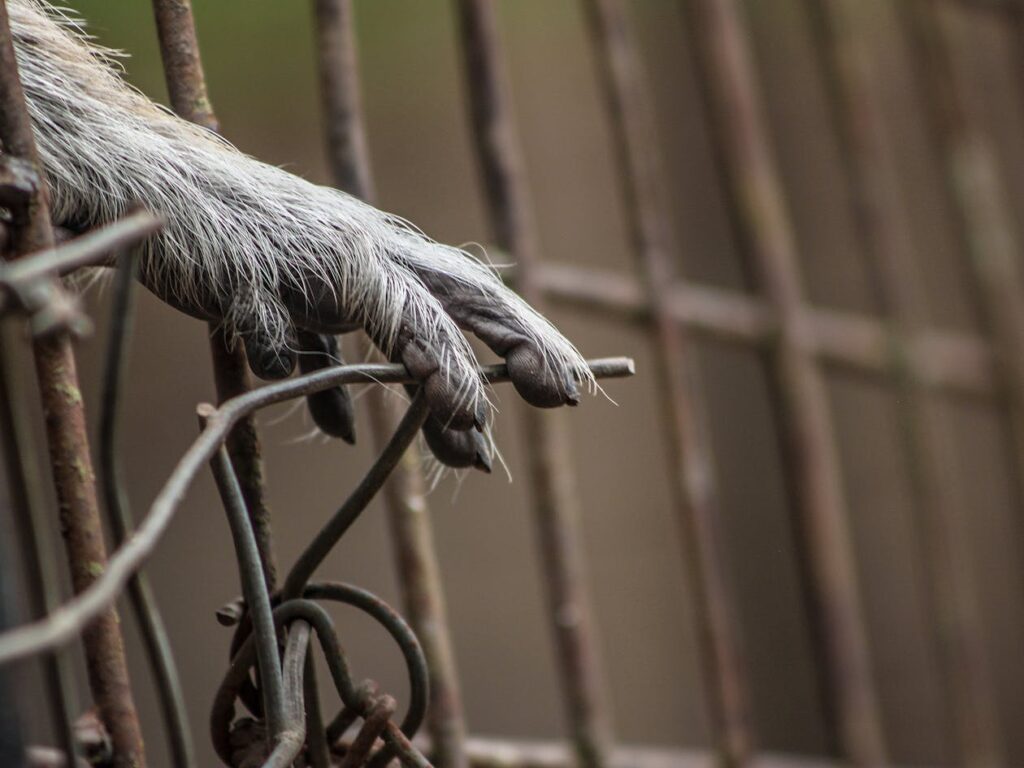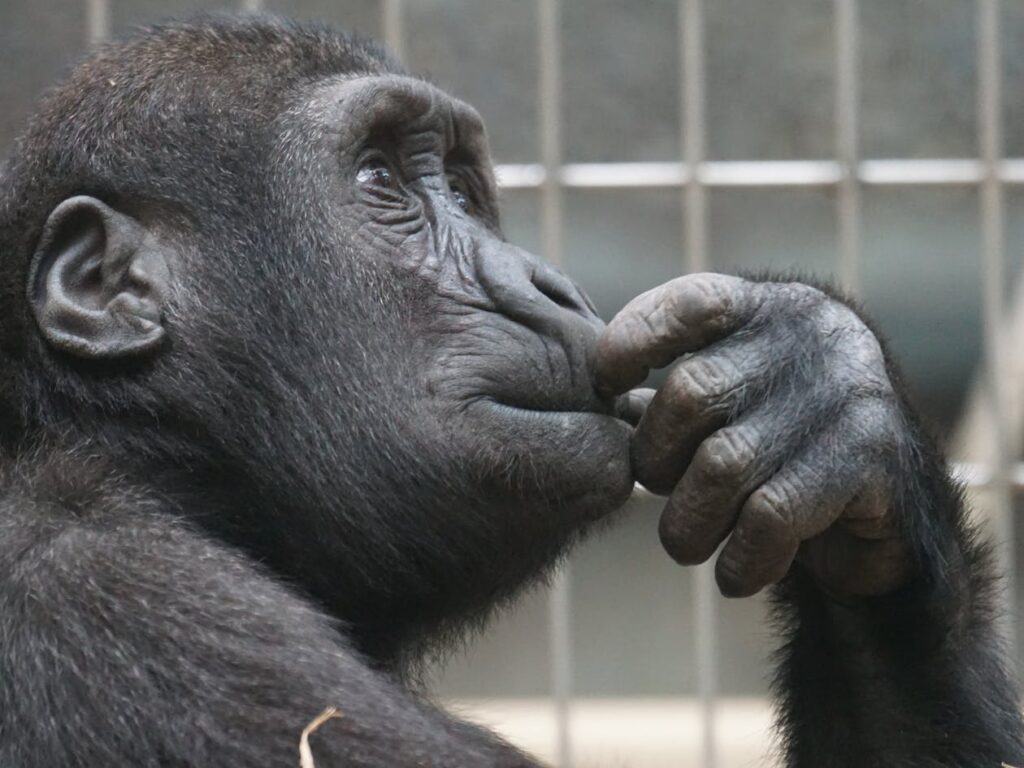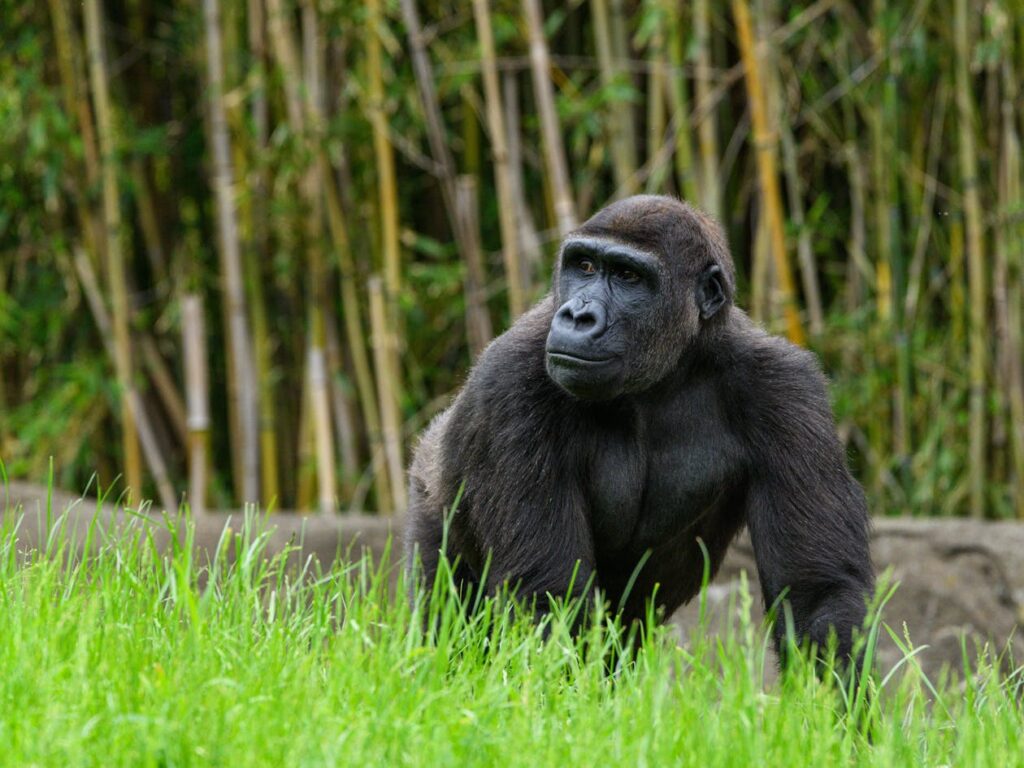Why Are Gorillas Still at Bristol Zoo Three Years After It Closed?

Something moved behind dusty glass at an abandoned British zoo. Urban explorers walking through empty buildings discovered they weren’t alone. Cameras captured footage that would spark nearly 900,000 views and ignite fierce debate about animal welfare, corporate transparency, and viral truth.
Masked trespassers claimed they walked straight through unlocked doors into a facility closed to public for years. What they filmed shocked viewers worldwide and prompted accusations of animal cruelty. Zoo officials scrambled to respond as hashtags spread and outrage mounted across social media platforms.
But viral videos rarely tell complete stories. Behind sensational clips and emotional reactions lies a more complicated truth about conservation, construction delays, and the real harm caused by breaking into secure facilities. What actually happened at Bristol Zoo?
Viral Video Shows Gorillas Inside Abandoned British Zoo
TikTok footage captured urban explorers encountering eight western lowland gorillas at Bristol Zoo Gardens site in Clifton. Facility had closed to public visitors in September 2022 following financial pressures from pandemic lockdowns. Viral video showed gorillas behind glass enclosures, with some animals appearing to bang on windows.
Trespassers filmed themselves walking through supposedly abandoned zoo buildings and expressing shock at discovering animals still present. One explorer questioned in the video: “Bristol zoo: what are you hiding? What is it you don’t want everyone to know?” Video text overlay declared: “These gorillas should never be in here.”
Footage spread rapidly across social media platforms, viewed nearly 900,000 times within days. Comments section filled with expressions of concern and anger. Chan Elizabeth wrote: “Those poor babies, my heart.” Another viewer added: “Should all be sent to their motherland.”
Urban explorer claimed in video that security appeared lax, stating they could have “opened the enclosure” if they wanted. Assertion raised immediate safety concerns about both human and animal welfare at supposedly secure facility.
“What Are You Hiding?” Explorers Accuse Zoo
Video creators positioned themselves as animal welfare advocates exposing hidden truth. Trespassers suggested Bristol Zoo deliberately concealed presence of gorillas at closed site. Claims implied potential neglect or abandonment of critically endangered animals.
Explorer stated in footage: “I, like many others, didn’t understand what was going on. Bristol zoo aren’t very transparent at all. It’s in the public interest to be transparent that’s why there is so much public attention.” Video framed discovery as investigative journalism revealing institutional secrets.
Content creators accused zoo of dishonesty about animals remaining at old location. Video suggested gorillas were trapped in unsuitable conditions without proper care. Emotional framing emphasized perceived sadness and confinement of animals behind glass barriers.
Viral nature of content encouraged copycat trespassing incidents. Multiple urban exploration groups subsequently broke into site seeking their own footage and views. Each new video amplified original claims and generated additional social media engagement.
Truth Behind Sensational Headlines Revealed

Bristol Zoo Gardens closed to public visitors in 2022 after 186 years of operation beginning in 1836. Pandemic-related financial pressures made continuing operations at Clifton site economically unsustainable. Zoo management announced plans to relocate to larger Bristol Zoo Project facility north of city.
Majority of animal collection successfully transferred to new location during 2022 and 2023. However, eight western lowland gorillas remained at original Clifton site awaiting completion of specialized habitat. Decision to keep gorillas at familiar location during construction period reflected standard animal welfare practices.
Zoo publicly announced gorillas would stay at Clifton site until new accommodation ready. Information appeared in press releases, local news coverage, and zoo social media accounts. Construction timeline for African Forest habitat extended into 2025 due to complexity of building appropriate enclosure.
Staff continued daily operations at closed Clifton site specifically to care for remaining animals. Experienced keepers maintained same routines, feeding schedules, and enrichment programs used when zoo operated publicly. Gorillas received consistent care from familiar personnel throughout transition period.
Why Eight Critically Endangered Gorillas Still Live There
Western lowland gorillas require specialized housing that recreates African forest environment. New Central African Forest habitat at Bristol Zoo Project involves extensive construction including climbing structures, temperature control systems, and naturalistic landscaping. Complex project requires substantial time and resources to complete properly.
Moving gorillas twice during transition period would cause unnecessary stress and disruption to troop dynamics. Transporting large primates involves sedation, specialized equipment, and careful planning. Multiple moves increase risks of injury, behavioral problems, and health complications.
Current Clifton accommodation continues meeting all welfare standards and regulatory requirements. Gorillas maintain access to large outdoor areas and multiple indoor spaces. Temperature carefully regulated to match warm conditions of Equatorial Guinea where species lives in wild.
Keeping animals in familiar environment while building superior habitat represents best practice in zoo management. Gorillas know their current space, have established territories, and maintain stable social relationships. Disrupting troop unnecessarily contradicts conservation principles guiding modern zoological institutions.
Keepers Work Daily Despite No Public Access
Zoo closure to visitors didn’t change fundamental needs of gorillas in captivity. Animals still require daily feeding, medical monitoring, behavioral enrichment, and social interaction. Staff schedules and care protocols remained identical to operational period.
Experienced keepers who worked with gorillas for years continued providing care throughout transition. Familiar faces and routines helped animals maintain stability during facility changes. Staff dedication prevented any disruption to established animal care standards despite public closure.
Temperature management systems operate continuously to replicate equatorial African climate. Gorillas receive species-appropriate diets prepared by nutritionists. Veterinary staff conduct regular health assessments. Behavioral specialists provide mental stimulation through varied enrichment activities.
Zoo Slams Misinformation Spreading Online
Bristol Zoological Society issued statements condemning viral videos as misleading and harmful. Zoo officials emphasized that trespasser footage lacked crucial context about ongoing construction project and continued animal care. Social media clips edited to maximize emotional impact rather than present accurate information.
Brian Zimmerman, director of conservation and science at Bristol Zoological Society, stated: “Since July 2024 our former Bristol Zoo Gardens site has been targeted by trespassers. This has resulted in videos and misinformation being spread on social media. We take these incidents extremely seriously and the care and welfare of our animals is always our top priority.”
Zoo management expressed frustration that viral content encourages additional break-ins by presenting facility as abandoned rather than actively staffed. Each new trespassing video generates more interest from urban exploration community seeking similar content and engagement.
False narratives about animal abandonment cause significant distress to dedicated keepers who maintain daily care. Staff members who devoted careers to gorilla welfare faced accusations of neglect based on deceptively edited footage lacking proper context.
Break-Ins Cause Real Harm to Gorilla Welfare
Trespassing incidents trigger sophisticated security alarm systems installed throughout facility. Loud alarms and flashing lights designed to deter intruders simultaneously frighten animals accustomed to quiet environment. Repeated disturbances disrupt normal behavioral patterns and sleep cycles.
Zoo officials reported that alarm activations cause gorillas to miss sleep, leaving them groggy and lethargic the following day. Sleep disruption affects animal health, mood, and social interactions. Cumulative stress from multiple break-ins compounds negative welfare impacts.
Heightened security measures forced zoo to lock gorillas indoors overnight, removing their normal freedom to move between indoor and outdoor spaces. Restriction contradicts standard practice of allowing animals control over their environment. Change made necessary solely due to trespasser risks rather than animal management needs.
Training programs preparing gorillas for eventual move to new habitat suffered interruptions from security incidents. Disrupted routines make animals less receptive to conditioning exercises. Delays in training could postpone relocation timeline, extending overall transition period.
Gorilla Facial Expressions Misunderstood by Public

Viral videos showing gorillas prompted viewers to interpret animal expressions through human emotional frameworks. Many comments described gorillas as appearing sad, depressed, or distressed based on facial features. Interpretations reflected fundamental misunderstanding of primate communication.
Zookeeper addressed misconceptions in TikTok video response: “It can be a misconception that gorillas look sad but that’s really just because they display completely different facial expressions than we do. If we’re happy, then we would smile. But a smile for a gorilla is actually a sign of aggression. The gorillas very rarely show their facial expressions through emotions.”
Natural resting face of gorillas often appears solemn or serious to human observers. Expression doesn’t indicate emotional state or welfare concerns. Professional animal care specialists assess welfare through behavioral indicators, physical health markers, and social dynamics rather than anthropomorphic interpretation of faces.
Gorillas demonstrate contentment through relaxed body posture, normal feeding behavior, and positive social interactions with troop members. Keepers familiar with individual animals recognize subtle indicators invisible to untrained observers viewing brief video clips.
Security Stepped Up After Repeated Trespassing Incidents
Multiple break-ins occurred at former Bristol Zoo Gardens site starting July 2024. Trespassers accessed facility through various entry points despite locked gates and signage. Each incident required police involvement and security system review.
Zoo increased security measures including enhanced monitoring, additional physical barriers, and more frequent patrols. Upgraded systems prevented trespassers from reaching animal areas but couldn’t eliminate alarm triggers from perimeter breaches. Balance between security and animal welfare created ongoing challenge.
Police confirmed investigations into trespassing violations at site. Breaking into secured facility represents criminal offense regardless of claimed intentions. Legal consequences await identified trespassers who filmed and posted evidence of illegal entry.
Security costs divert limited conservation funds from animal care and habitat construction. Money spent on preventing break-ins could otherwise support endangered species programs. Social media-driven trespassing creates unnecessary financial burden on nonprofit conservation organization.
New African Forest Habitat Nears Completion

Construction progress on Central African Forest enclosure at Bristol Zoo Project reached advanced stages by early 2025. Facility includes climbing structures, planted trees, temperature-controlled indoor areas, and naturalistic outdoor spaces. Habitat designed to exceed previous accommodation in size and enrichment opportunities.
Gorilla section of complex expected completion within next couple months according to zoo updates. Animals will relocate once habitat passes final inspections and staff complete environmental conditioning. Move represents culmination of years of planning and substantial financial investment.
Expanded facility will also house cherry-crowned mangabeys, slender-snouted crocodiles, African grey parrots, and West African freshwater fish. Multi-species habitat recreates Central African forest ecosystem. Full complex opens to public spring 2026 after completing all construction phases.
New accommodation provides significantly more space and environmental complexity than previous enclosure. Modern zoo design emphasizes natural behaviors, social opportunities, and cognitive challenges. Gorillas will benefit from state-of-art facility reflecting current understanding of captive primate welfare.
What This Reveals About Zoo Closures and Online Outrage
@bristolzooproject An important message from our gorilla keepers! #BristolZoo #BristolZooGorilla #Gorillas ♬ original sound – Bristol Zoo Project
Legitimate concerns about abandoned zoo animals exist at facilities worldwide. Documented cases show animals left without care when institutions close suddenly. Real welfare crises deserve public attention and intervention when they occur.
Bristol Zoo case demonstrates dangers of viral misinformation even when addressing legitimate issues. Incomplete information combined with emotional framing creates false narratives. Social media amplification spreads inaccurate stories faster than corrections can reach audiences.
Critical thinking and verification become essential before sharing concerning content. Checking official sources, reading beyond headlines, and questioning emotional manipulation help prevent spreading misinformation. Genuine animal welfare advocacy requires accuracy rather than just engagement.
Urban exploration content serves entertainment purposes for creators seeking followers and views. Trespassing into secure facilities endangers both humans and animals while serving no legitimate advocacy function. Real conservation work happens through proper channels, not through breaking laws for viral content.
Loading...

